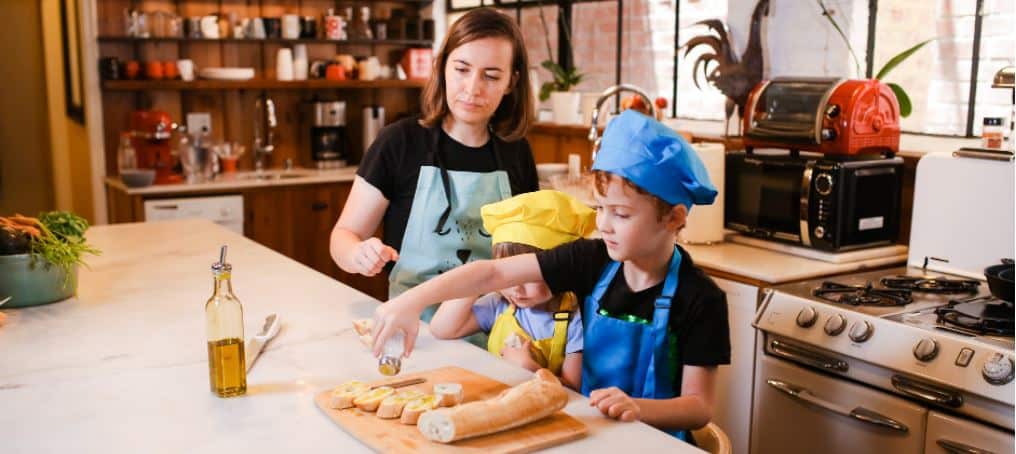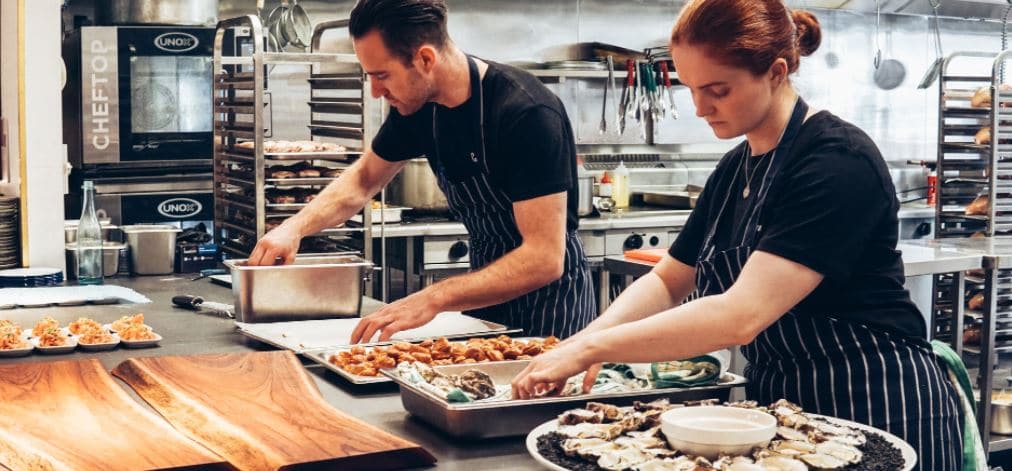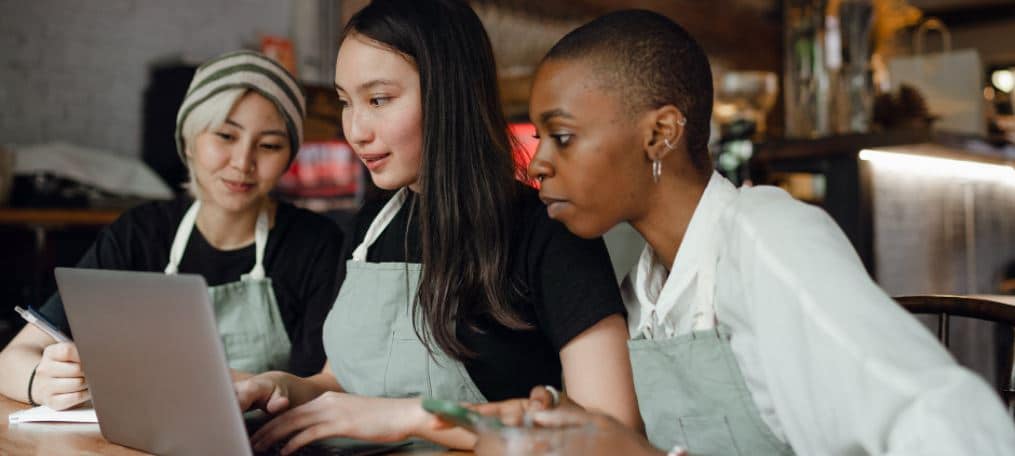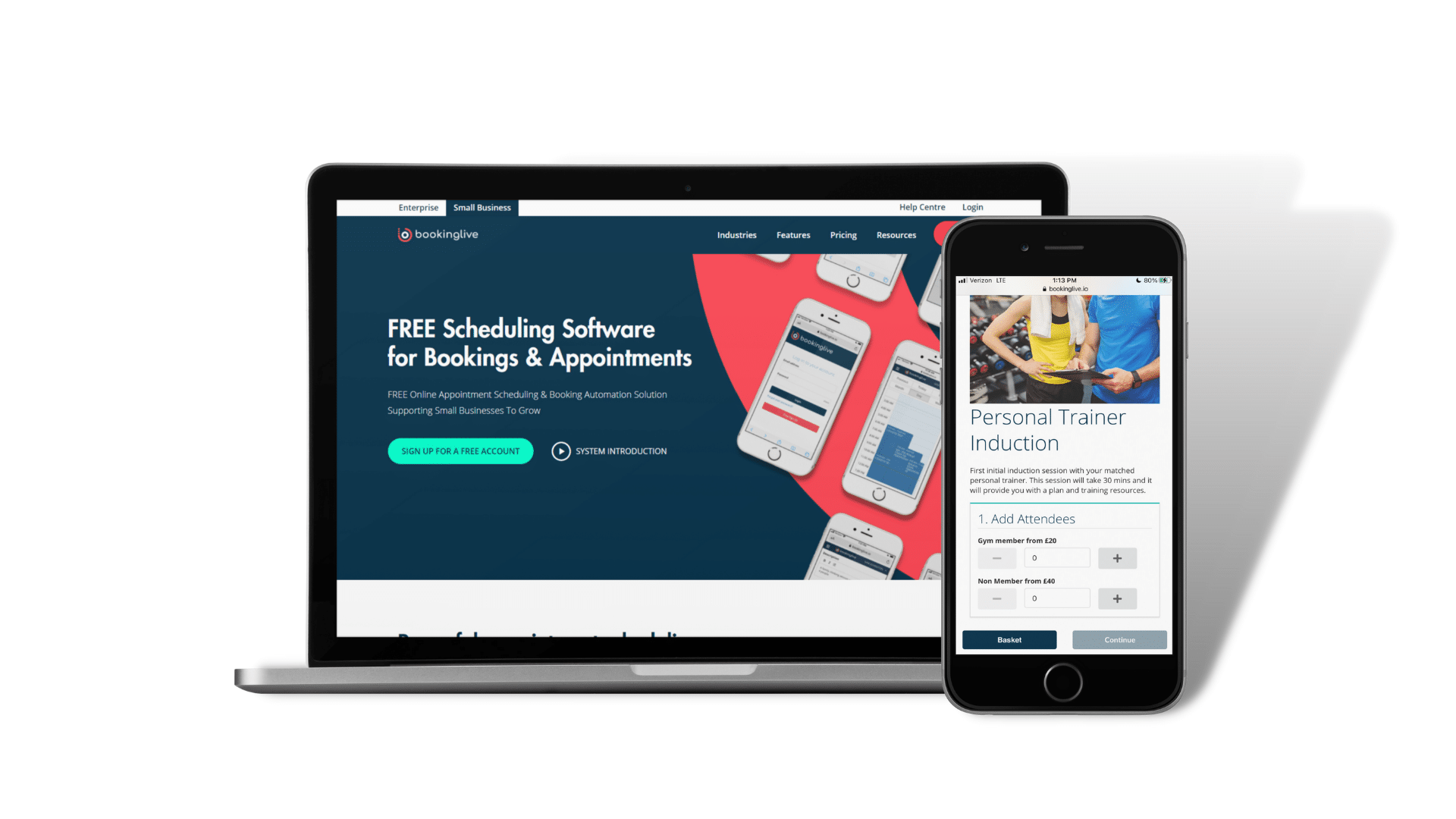How To Advertise Cooking Classes: A guide on 12 successful strategies
March 14, 2022
Cooking classes can be an escape. A chance to learn a new skill and pick up a hobby. To advertise cooking classes effectively, you need to communicate these benefits to your audience.
Whether your bookings have dried up and you’re looking for inspiration or preparing to open a cookery school, read our guide on how to advertise cooking classes.
A guide on how to advertise cooking classes
Follow our 12 successful steps to advertise your cooking classes and increase sales.
-
Optimise your website
-
Improve local SEO
-
Make it easy for attendees to book
-
Establish yourself on social media
-
Work with food bloggers and influencers
-
Utilise Google Ads
-
Start a blog
-
Create email marketing campaigns
-
Network with other teachers
-
Invite special guests
-
Sign up for Groupon
-
Post flyers

1. Optimise your website
Whether your potential customer first heard from you via social media, Groupon or word of mouth, they’ll likely browse your website before they decide to book a cooking class – so it’s got to be perfect! Although there are many ways to advertise a cooking class, Search Engine Optimisation (SEO) mustn’t be ignored.
Research and target keywords
A way to advertise your cooking class for free is to generate organic traffic through Google. And to generate more organic traffic, you need to get as high up in the rankings as possible. To do this, one of the things you should do is research and target keywords in your website copy.
Keywords relate to words and phrases that users type into search engines. You want to make sure that your website content is relevant to these keywords. Do your keyword research using tools like Google Keyword Planner – this is completely free. All you have to do is sign in with your Google account. The software will show you how many people search for the term over a given time period.
It’s a good idea to target keywords related to your local area and USP. For example, ‘cooking classes for beginners’, ‘cooking classes West Midlands’, ‘baking school near me’, ‘Italian cooking class’. With more specific keywords, you can narrow down your audience to those with high intent to book a class.
Feature testimonials
Testimonials build up trust. They allow potential customers to see the benefits of your cooking classes first hand. For example, an attendee may share a story of how they progressed from being unconfident in the kitchen to cooking a dish for a dinner party due to what they learnt in your class.
You can create a portfolio of testimonials over time. Simply share surveys and feedback forms with your current attendees via an email marketing campaign or social media. You can read more about these methods of advertising cooking classes later.
Build a responsive website
After going through the motions of adding relevant, quality content to your website, you want people to be able to read it! And a non-responsive website can undo all of this hard work. If your content loads slowly or incorrectly on a page, users will quickly abandon the site.
When you build your website for your cooking classes, make sure that it translates well on both mobile and desktop. Run tests to assess the quality of your site’s responsiveness, and if it’s not quite right, you may have to bring an expert on board.
2. Improve local SEO
If there are a few competitors in your local area, it’s important to take action to improve your local SEO. Local SEO is focused on getting your website to the top of search results in your local area. In comparison, SEO aims to improve your site on a national or global level. If you host cooking classes in person, you want to make sure that the right people can find your services. So, this more targeted approach is ideal.
There are several simple steps you can take to boost your online visibility in your local neighbourhoods.
Complete a Google My Business profile
Google My Business (GMB) is a tool that can help customers find information about your business, such as your website address, phone number, opening hours, services, reviews, images and more.
If you don’t already have a GMB account, sign up now! If you already have a profile set up, are you using it to its full potential?
First things first, make sure you’ve completed every single section. Providing a high level of detail helps Google understand your business, and your profile will become visible for relevant search terms. Check that all your information is correct regularly – especially your phone number and opening hours – so customers can contact you easily.
Collect reviews
Reviews are reflections of what people think about your cooking classes and help potential customers decide whether to book with you or not. Seeing those shining stars next to your business name could be that final nudge a customer needed to sign up to a class.
Every time you gain a new review on your profile, whether positive or negative, you should respond. This allows other users to see you’re appreciative of feedback and view any criticism as constructive.
Localised website content
To signal the location of your cooking classes to Google, you need to add mentions of your area in your website content. It would be helpful to include a map and descriptive directions of how to get to the building that you host your cooking classes from. Try to include a combination of hyperlocal terms and references to the county you serve.
If you’re just starting out, establishing your cooking classes locally will provide you with a great foundation to expand to wider areas.

3. Make it easy for attendees to book
Someone has discovered your cooking classes online and they’re interested in attending. But how do they book their place? You may think they could ring you up or message you on social media. This seems good enough on the surface, but you can quickly become disorganised, details will be missed, and customers will have a poor service. This will only become amplified as you grow your business and take on more bookings.
Having a clear, convenient booking process will make you stand out from competitors and win more business. A class booking system from BookingLive will help you do exactly that. When you advertise your cooking classes on your website and social media, you can embed a ‘book now’ widget using the software. Customers can schedule their cooking class in five simple steps at any time of the day – they don’t need to wait to ring you in more sociable hours. Every cooking class slot is presented to them in a sleek interface and availability is updated in real-time. So gone are the days of double bookings.
4. Establish yourself on social media
Social media is a great way to advertise cooking classes, build brand awareness and strengthen relationships with existing and potential customers. Although you can’t expect your follower count to skyrocket overnight, the key is to be consistent. Your audience needs to see the message about your cooking classes frequently for it to have an impact. Create a content calendar to stay on track and your following will grow over time.
Tailor your content to each social media platform
To effectively advertise your cooking classes, you need to use the same platforms as your target audience. There’s no point putting your energy into Twitter if your audience isn’t going to see your posts!
For cooking classes, the best platforms will probably be Facebook and Instagram. Remember to adjust your content depending on the platform. For example, Instagram is suited to short videos, vibrant photos and witty captions. Whereas you should share a link to your latest blog with a description on Facebook.
Create video content
9 out of 10 Instagram users watch videos weekly. This can include stories, reels and Instagram live videos. So, it’s essential to tap into this with behind the scenes clips of your cooking class. Perhaps upload a reel of how to make a certain dish to give people a taste of what they can learn with you.
Video content lets your personality shine and allows you to show off your cooking skills. Creating engaging videos will encourage people to try a cooking class for themselves and your bookings will soon add up.
Include a link to your booking page in your bio
The final touch to your social media page should be a link to your booking portal. After doing all you can to advertise your cooking class, you need to make it easy for people to book!
With BookingLive, you can embed a booking widget in your profile and share a live booking link in your social posts. Bring this convenience to your customers and they’ll be more likely to try your cooking class.

5. Work with food bloggers and influencers
To support your social media efforts, working with food bloggers and influencers is a great way to promote your cooking class. These influencers will already have a large following of food enthusiasts, so it’s the perfect place to shout about your services.
If you’ve got the extra cash to spend, it’s worth offering paid partnerships with these individuals. They can champion your cooking classes, share special offers for bookings and host competitions to win a free space at one of your masterclasses.
Using food bloggers and influencers to advertise your cooking class will lead to increased brand awareness, a rise in your own social media following and a boost in sales. Result!
6. Utilise Google Ads
If you’ve got the budget, Google Ads can give your online visibility and cooking class attendance a boost. The ad will be positioned at the top of search results for a chosen phrase such as ‘vegan cooking class’ and you only pay if someone clicks on it (when using a cost-per-click bidding strategy). The price you pay will depend on the phrase and the level of competition for that phrase.
It’s important to note that just because someone has clicked on your ad, it doesn’t guarantee that they’ll book a cooking class. But it’s a chance worth taking since Google Ads showcase your brand to larger audiences. And if done well, you can produce some impressive results.
If you’re reluctant about paying too much for this form of advertising, you can cap your spending. This way, you can dip your toes into Google Ads whilst keeping your finances in check. We’d recommend starting small with one campaign focused around a specific cooking class such as vegan recipes. Set your budget to £5 a day and build from there.
7. Start a blog
Starting a blog is another way to share your expertise, whilst subtly promoting your cooking class. The content should be informative and don’t be scared to share your opinion on certain cooking trends. The more useful and engaging your blog is, the more shares it will get on social media, and more people will become aware of your brand.
Here is your chance to address niche markets that would be interested in your cooking classes. For example, you could write a blog about knife skills for those looking to improve their technique. You could even share advice on finding the best vegan cheeses to use in cooking and link back to your vegan cooking class.
As you grow your network and become acquainted with other chefs, you could interview them and present their tips in the blog. This will boost your credibility in the market, and if the chef interviews you for their own blog in return, you’ve gained some promotion of your cooking class.
8. Create email marketing campaigns
Before you create an email marketing campaign, you need to collect contacts first. To do this, you need to give people an incentive to subscribe to your emails. Perhaps offer a discount on their first cooking class or provide access to valuable content. Place the sign-up link on your website and social media bio so that your audience is aware of your emails.
Once you’ve grown an email list, it’s handy to segment your audience based on their cooking interests and behaviours. For example, you could send content about vegan food to vegan cooking class attendees, or a discount to members that haven’t booked a class in the last month. This enables you to send targeted emails that appeal to each individual, meaning they’re more likely to open and engage with it.
A tool that can automate this all for you is Mailchimp. Better still, Mailchimp can be integrated with your BookingLive software so all booking confirmations go straight into your mailing list. You can also design beautiful emails and track their performance with the integration.
9. Network with other teachers
Networking with other cooking teachers? Shouldn’t I be steering clear of the competition? You may be thinking. But there’s a great community out there that can share their experiences and support you.
For example, you may think that introducing a chocolate making class is a fun idea. And you may gain a lot of bookings to start with, but it’s not likely to lead to repeat business. Instead of taking the risk and finding this out for yourself, another teacher may be able to warn you of this outcome – saving you time and money.
Networking can actually help you advertise your cooking classes. Every cooking teacher will have their niche, so having connections will allow other teachers to recommend your services to their attendees. For example, a member of another cooking school may engage in vegetarian cooking classes but are looking to progress to vegan cooking. This is where your contact can point them in the direction of your offering. What’s not to like about this free advertising?

10. Invite special guests
Following on from the networking theme, you can take advantage of your newfound relationships and invite teachers to your cooking classes. Featuring special guests can create a buzz around your cooking class, and is a great way to boost attendance.
Inviting a fellow teacher once every month or two would be ideal. If you return the favour and join their cooking class, you’ll gain some bonus advertising for your services!
11. Sign up for Groupon
Groupon is a great platform for expanding the visibility of your cooking classes if you can afford to offer a discount. Customers browse Groupon for deals on products and experiences, and these cheaper rates may entice attendees that otherwise wouldn’t have searched for cooking classes.
Groupon allows you to increase sales and establish authority online. Not only this, BookingLive offers a Groupon integration which makes managing bookings with voucher payments easier. Customers can redeem their Groupon voucher when they book their cooking class and the online booking system automatically invoices Groupon afterwards. So you can reap the benefits without all the admin.
12. Post flyers
Not everyone is online 24/7, and more traditional forms of advertising still have their perks. Designing, printing and distributing flyers are a simple way to build word of mouth for your cooking classes. You could post the flyers through letterboxes, display them in local supermarkets and any community notice boards.
The main details you should include in your flyer are:
- Your name
- Website address
- Contact details
- Social media handle
- Types of cooking classes on offer
- Price range
Use bold colours to make your flyer stand out from the competition and keep the content simple. The purpose of the flyer is to make people move online to learn more about your cooking class after all.
We hope that our guide on how to advertise cooking classes sets your business up for success! If you’re interested to learn more about how a booking system can help you to run your cooking classes, contact us today or book a demo now.
